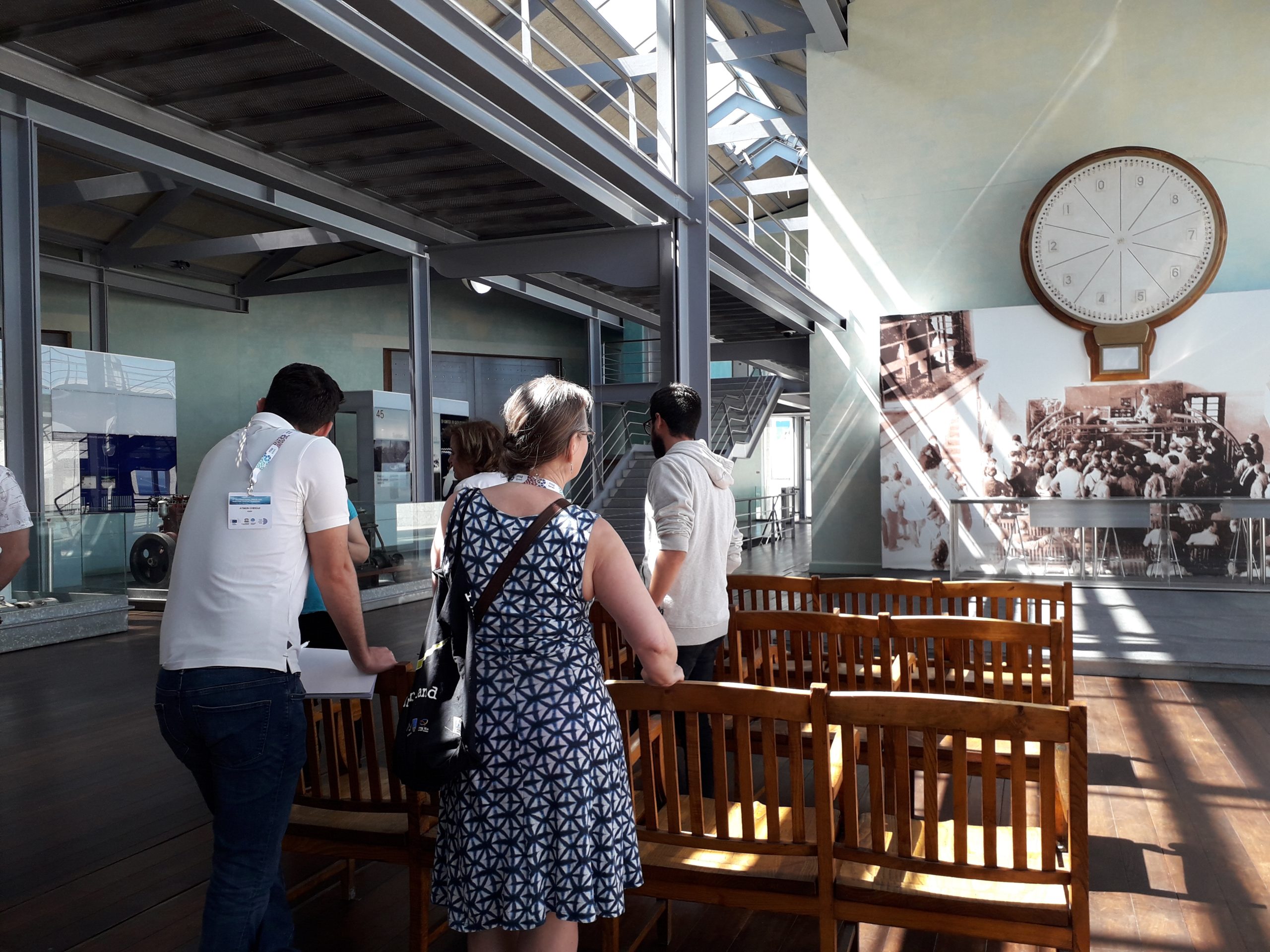Last Tuesday 14th of may, from “Vigo Pesqueiro” guided tours program we had the honour to being the host of one of the round tables from the forum. It was a great occasion to share with them our maritime and fisherman inheritance. Our participants were experts in the area of marine space planning and their origin were countries such as Panama, Sweden, Seychelles or Spain, among others. Our tour started in “Porta Do Sol” where we could admire “O Sereo” by Galician artist Francisco Leiro, it’s an sculpture that symbolise very well the character of all vigo citiziens, hybrid of fish and man.

The itinerary went into the old town; historical squares like “A Princesa” were it was celebrated one of the most important market of fish. We carried on till the Constitution square, where in one of the fantastic buildings was borne the famous military naval officer Méndez Nuñez.Among the purposes of our visitants it was to have shorts interviews with the neighbours of the area. We had the opportunity to talk with a great Master of the basket making, Antonio Suárez Davila, who was born in one of the houses of this lovely street.
He was really kind to answer all the questions and to show as unique pieces that he had in his workshop, a really museum. He talked us about the relation of this basket with the sea, because no so long time ago, where the plastic was no used, all the baskets for the works in the sea and the land. At that time this street had more than twenty shops of baskets. He told us that he learned this legacy of the basket making from his family, from the grandfather. Unfortunately, his son it’s not going to carry on with the same job because is not sustainable economically.

From the group of the International Forum of Marine Space Planning as last question, they asked him to send a message to the Forum. He asked straight: “Please, forbid the plastic”
Next stop it would be “Peixaría Street”, most popularly known as oyster’s street because here it was located the market of this mollusc from more than one hundred years. Traditionally the job of oyster seller was done by women, but nowadays we can find also young’s men doing this job.
The tour would continue into the Market, in Teóficlo Llorente Street. There we had a chat with the fishmonger. The job that they do it was a familiar legacy from four generation in some of the cases. The relation of their family with the sea implicates the all family, while the women carried and sold the fish in the markets the men were on board fishing.

We passed along the dry seashore of “O Berbés”, with the fisherman arched houses waiting to be repaired and we entered in the fishing port facilities. After the visit into the fishing port, our tour of maritime and sea heritage continue into the last stop, the Galician Museum of the Sea “Museo Do Mar”

This museum was the perfect place to ended the tour, learning about Vigo’s maritime history: fishing, seafood, aquaculture and conservation, from the primitive salting to the modern freezing methods, as well as technical advances regarding boats and marine biology.





